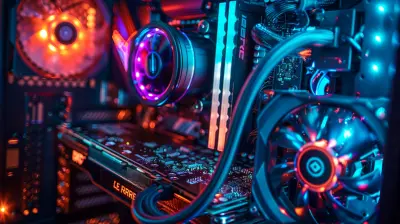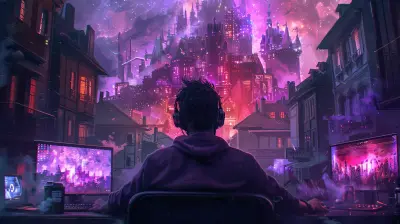Why Realistic Lighting is Essential for Immersive Game Design
2 July 2025
Let’s face it—nothing pulls you out of a game faster than awkward shadows or oddly bright rooms that don’t match the mood. You know what I’m talking about: ever walked past a flickering torch in a dungeon and thought, “Why is this cave lit like a supermarket?” That’s where realistic lighting steps in and saves the day.
In today’s world of high-end graphics and ultra-detailed environments, lighting is more than just a way to see stuff—it's the heartbeat of immersion. When done right, it sets the tone, tells a story, and makes us feel like we’re actually inside the game world. Let’s break down why realistic lighting isn’t just some fancy graphics upgrade. It’s essential.
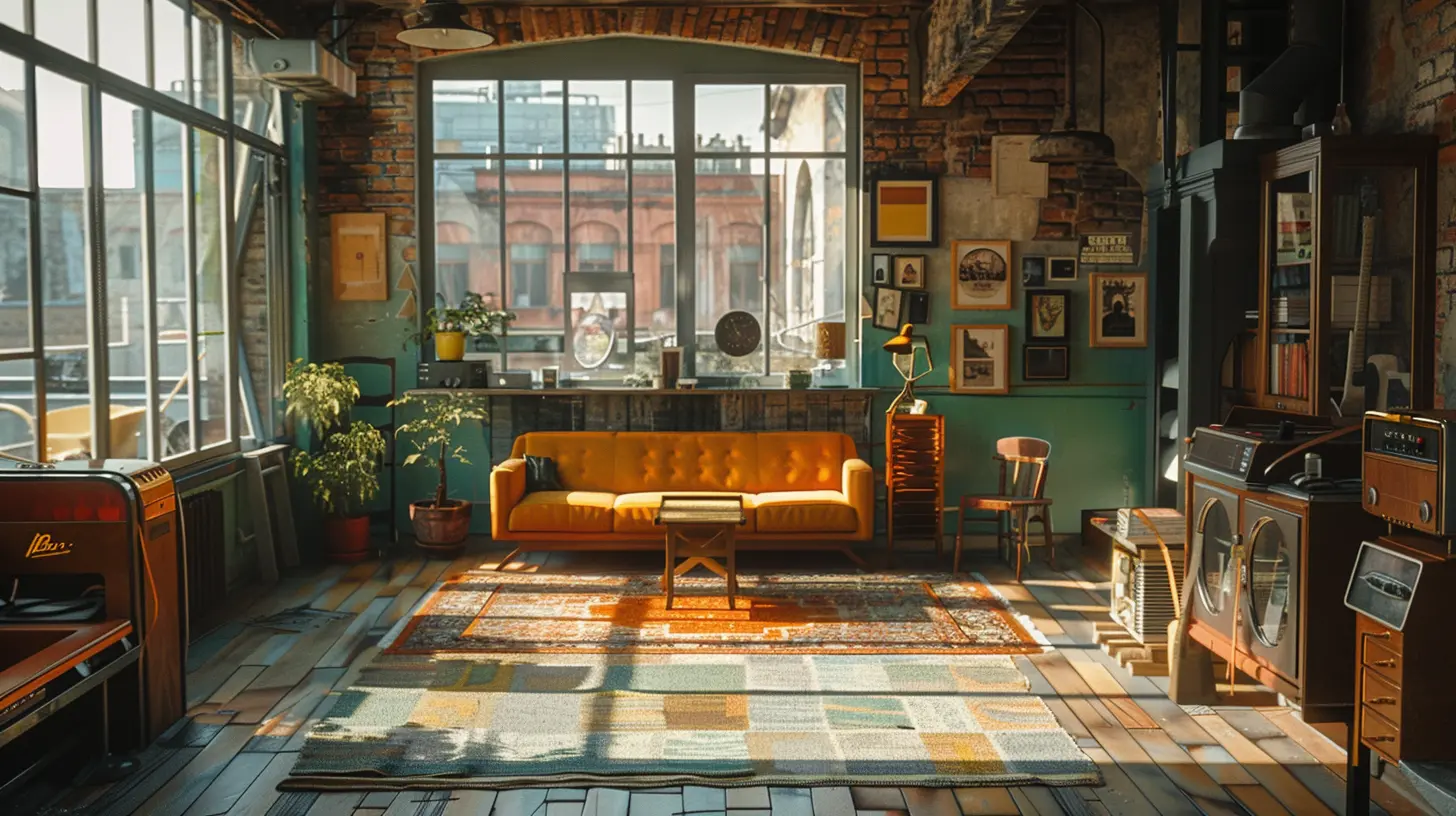
What Do We Mean by “Realistic Lighting”?
Before we dive deep, let’s clarify what “realistic lighting” actually means in the context of games. It’s not just about brightness or illuminating a room—it’s how light interacts with the environment and with materials in a lifelike way. Think shadows that fall correctly, light that bounces off surfaces naturally, and environments that shift in feel when the sun sets.Realistic lighting mimics real-world principles, taking cues from physics to generate believable visuals. Whether it’s the soft glow of morning light or the harsh contrast of a neon-lit alley, these subtle cues trigger emotional and psychological responses in players.
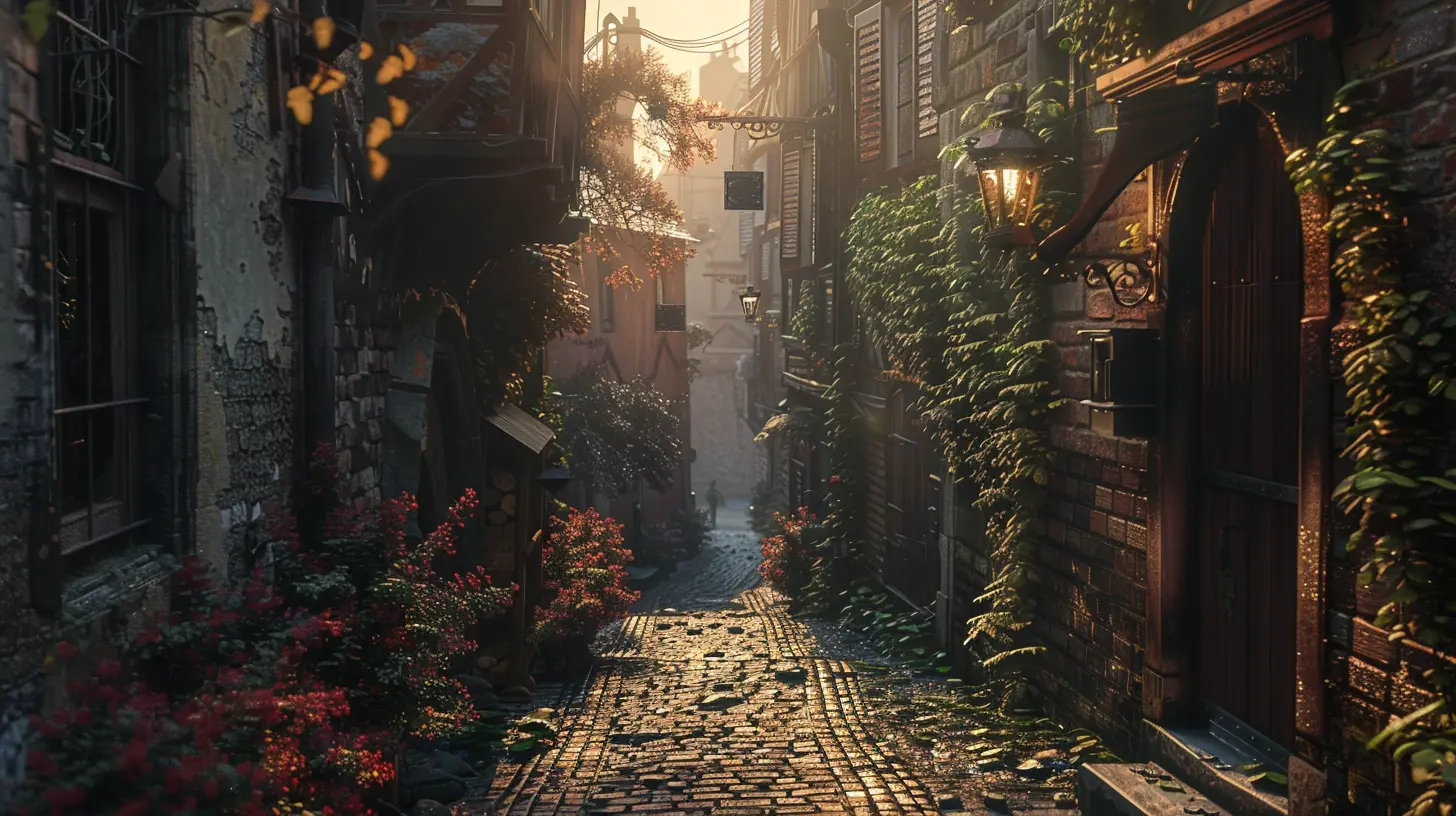
The Emotional Power of Lighting
Imagine playing a horror game in full daylight. Kinda misses the point, right? That’s because lighting sets the emotional tone. It tells your brain what to feel—without saying a word.- Warm, soft lighting makes environments feel cozy or nostalgic.
- Cool, blue-toned lighting often creates a sense of calm or sadness.
- Dark, shadowy lighting instantly generates tension, fear, or suspense.
Games like _The Last of Us_, _Resident Evil_, and _Alan Wake_ masterfully use lighting to stir your emotions. It’s the difference between walking into a room and thinking “Cool design,” vs. “Oh no, something’s about to go down.”
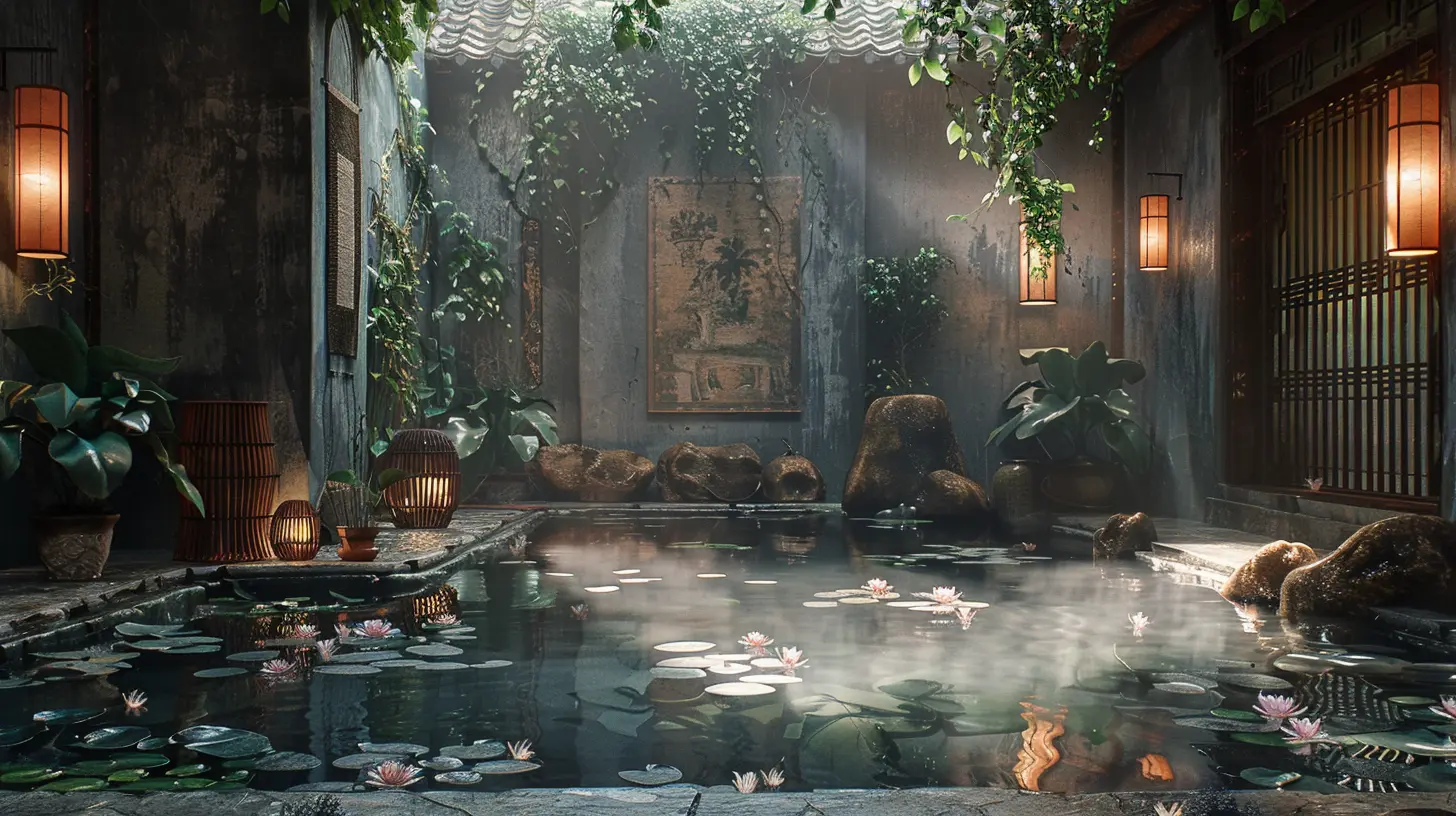
Lighting Drives Immersion in 3D Worlds
When you step into a virtual world, your brain subconsciously looks for things that “feel right.” Lighting dramatically improves spatial awareness and realism.Here’s what realistic lighting does:
- Creates depth: With proper shadows and highlights, you get a better sense of space.
- Defines materials: Whether it’s stone, wood, or metal—realistic lighting lets you distinguish them instantly.
- Shapes the environment: Shadows provide clues, like where that enemy might be hiding or where you should (or shouldn’t) go.
Dynamic lighting—where lights change based on time, weather, or gameplay events—pushes immersion even further. Open-world titles like _Red Dead Redemption 2_ and _Horizon Forbidden West_ are perfect examples of lighting used to create believable, living worlds.
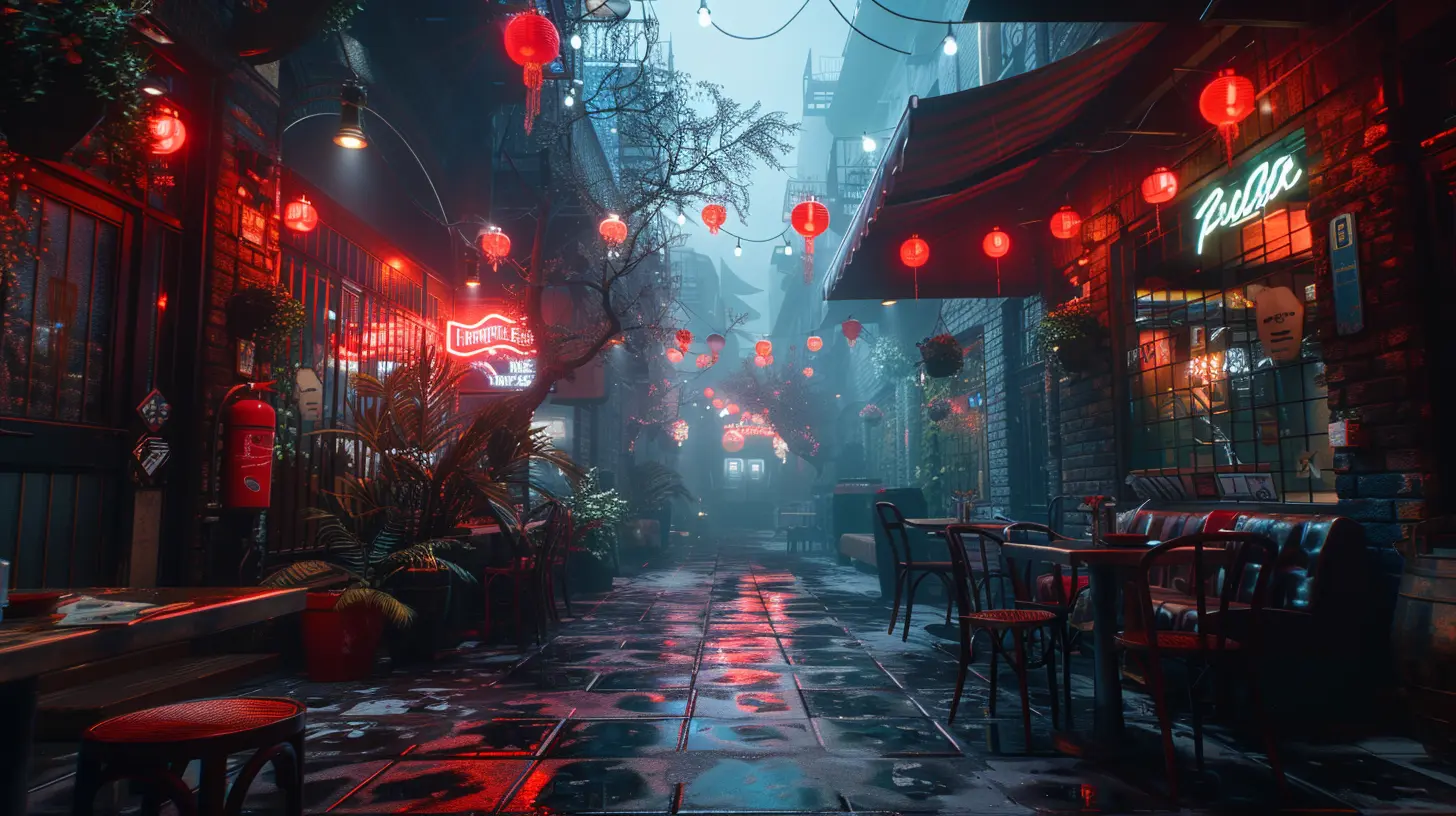
It’s Not Just Aesthetic—It’s Functional
Let’s not forget—lighting isn’t just there to make things pretty. It also impacts gameplay in a big way, often guiding players subtly through visual cues.- Guiding the Player’s Eye: Want players to notice something important? Light it up. Your brain naturally follows light and contrast.
- Defining Objectives: Many games use lighting to mark paths or objectives without slapping a giant arrow on the screen.
- Triggering Reactions: Sudden light changes? Yeah, your sprint finger is already on edge.
In titles like _Dead Space_, flickering lights and sudden blackouts become gameplay elements, building suspense and forcing adaptation. That’s lighting doing double duty—art and action.
Realism Without Real-Time? Yes, With Smart Techniques
Now you might ask, “But isn’t realistic lighting super demanding on hardware?” You’re not wrong. Real-time lighting—especially ray tracing—can be intensive. But developers have plenty of tricks up their sleeves to balance visuals and performance.Here are a few:
- Baked Lighting: Lighting information is pre-calculated and stored in textures. This keeps performance high without sacrificing visual quality.
- Global Illumination (GI): Simulates how light bounces in an environment. Some engines now do this in real-time or with approximations.
- Screen-Space Reflections (SSR): Reflects nearby surfaces based on screen data—it’s not perfect, but often good enough.
With modern engines like Unreal Engine 5 and Unity HDRP, achieving jaw-droppingly realistic lighting is more accessible than ever—even for indie developers.
Ray Tracing: The Future of Game Lighting?
No talk about lighting in recent years is complete without mentioning ray tracing. This tech mimics how light behaves in the real world, creating super accurate reflections, refractions, and shadows. It’s a game-changer.Titles like _Cyberpunk 2077_ and _Minecraft RTX_ showcase what’s possible when you lean full-on into ray tracing. The result? Worlds that look almost indistinguishable from reality.
However, ray tracing still comes with a cost—namely, performance. That’s why many games offer hybrid approaches, mixing ray tracing with traditional methods to get the best of both worlds.
Ambient Occlusion: The Secret MVP
Here’s a lighting term you may not hear often, but it’s doing a LOT behind the scenes: Ambient Occlusion (AO).AO adds depth by simulating how light gets blocked in tight spaces—like where the floor meets the wall or inside the folds of a character’s clothing. Without it, scenes look flat and lifeless. With it? They pop.
In short, AO makes everything feel more “grounded” and anchored to the world. It’s a subtle difference, but your eyes notice when it’s missing.
Lighting as Storytelling
This is where things get really interesting. Lighting isn't just technical—it’s narrative. Games use it to:- Reveal or conceal: A glowing object in the dark draws the player’s attention.
- Foreshadow events: Red flashing lights? Trouble ahead.
- Portray character emotion: A character bathed in shadow might suggest internal struggle or hidden motives.
Think about _Control_ by Remedy. Rooms shift color dramatically to reflect story beats. The lighting isn’t just mood—it tells part of the story.
Multiplayer and Competitive Games Need It Too
You might think: “Sure, lighting matters in single-player or story-rich games... but what about multiplayer?” Spoiler alert—it still matters.In games like _Call of Duty Warzone_ or _Valorant_, lighting plays a tactical role:
- Visibility: Realistic shadows might help (or hinder) spotting enemies.
- Map familiarity: Players often use lighting differences for navigation.
- Performance balance: Developers tweak lighting to keep things fair and fast.
Lighting in competitive games has to walk a fine line—stylized enough for clarity, but still believable to maintain immersion.
Challenges Developers Face
Creating realistic lighting isn’t a walk in the park. Developers deal with all sorts of obstacles:- Hardware limitations: Not everyone has a top-tier GPU.
- Consistency across platforms: Lighting needs to adjust for PC, consoles, and now mobile.
- Artistic vs. realistic balance: Sometimes realism needs to take a backseat to a game’s art style.
Still, the bar keeps rising. Players now expect games to look and feel cinematic. Studios are investing more resources into lighting than ever before.
So… What Happens When Lighting Falls Flat?
Let’s flip the script. What if the lighting just isn’t up to snuff?- Flat visuals: Everything looks the same, nothing stands out.
- Lack of depth: The world feels fake, like a cardboard cutout.
- Gameplay confusion: Missed clues, wrong turns, or just lost in the dark (literally).
Bad lighting breaks immersion faster than a typo in a game’s dialogue. It’s like watching a blockbuster movie with a flashlight shining at the screen—distracting and frustrating.
Lighting Tools and Tech: The Industry Standards
Curious how the pros do it? Here are some of the top lighting systems and engines that drive today’s most visually stunning games:- Lumen (Unreal Engine 5): Offers real-time global illumination and incredible light bounce effects.
- Enlighten (Unity): A powerful real-time GI solution.
- Ray Tracing APIs: DirectX Raytracing (DXR), Vulkan, and NVIDIA RTX.
These tools help developers push lighting to near-photorealistic levels—without sacrificing performance or visual storytelling.
Why Gamers Should Care
Even if you’re not a developer, it’s worth knowing how important lighting is. Because when it’s done right, you may not even notice it—you're too immersed. But when it’s wrong… boy, you will.If you ever caught yourself staring at the way the sun shines through leaves in a game, or how a corridor gets darker the farther you walk, that’s realistic lighting doing its job. It’s the invisible artist behind every jaw-dropping scene.
Final Thoughts
Whether it’s subtle mood-setting or full-blown cinematic vistas, realistic lighting plays a critical role in making game worlds believable, playable, and unforgettable. It bridges the gap between pixels and presence—handing you not just a game, but an experience.So next time you boot up your favorite title and find yourself saying “Wow, this game looks amazing,” take a moment to appreciate the lighting. It’s doing more heavy lifting than you think.
all images in this post were generated using AI tools
Category:
Realism In GamesAuthor:

Lana Johnson
Discussion
rate this article
2 comments
Zayden McQuiston
Insightful perspective, well articulated!
November 19, 2025 at 5:24 AM

Lana Johnson
Thank you! I'm glad you found it insightful!
Beau Whitaker
Realistic lighting enhances immersion, drawing players deeper into the game world’s atmosphere.
July 7, 2025 at 2:57 AM

Lana Johnson
Absolutely, realistic lighting plays a crucial role in creating an engaging atmosphere that captivates players and enhances their overall experience.

